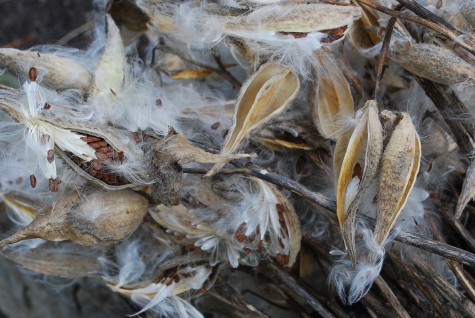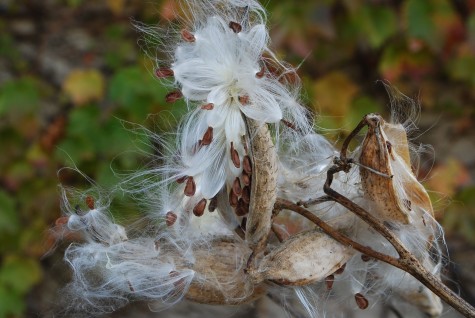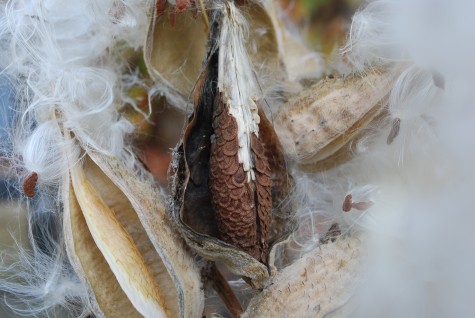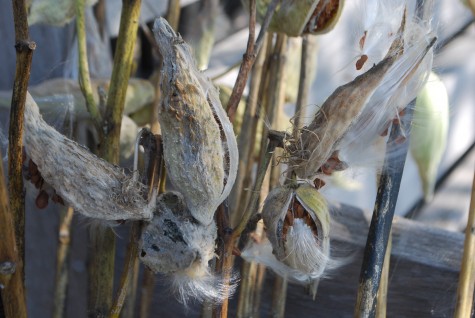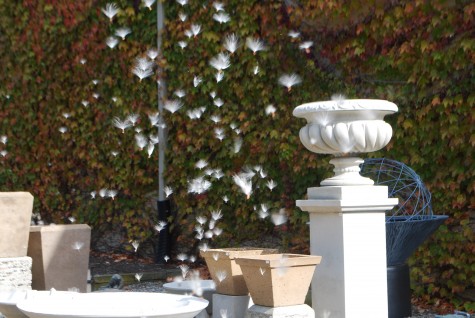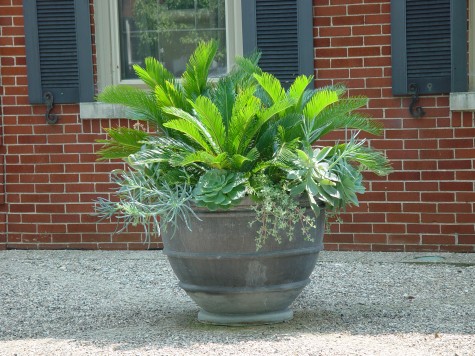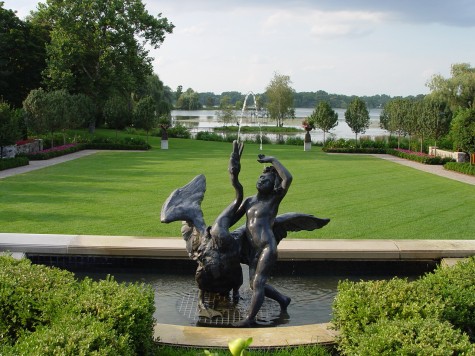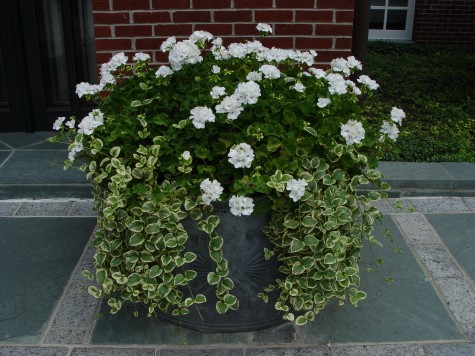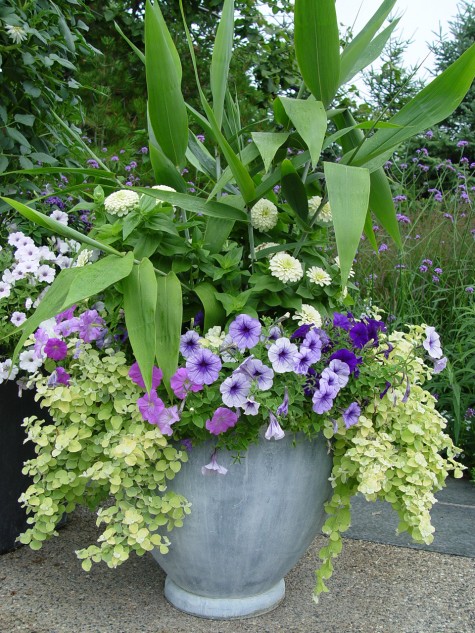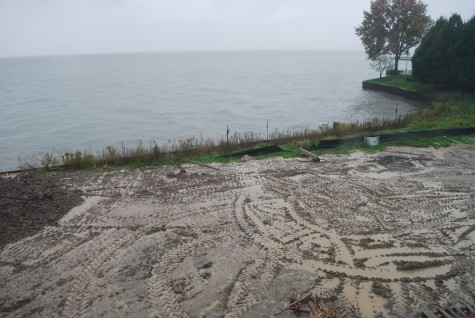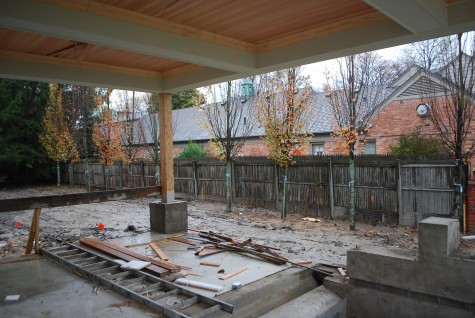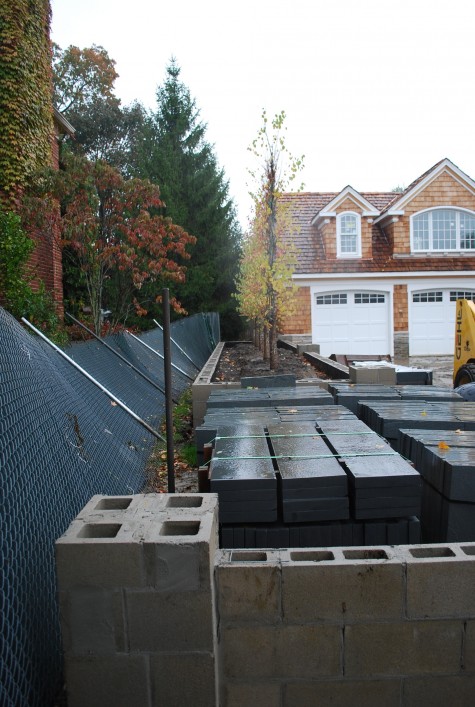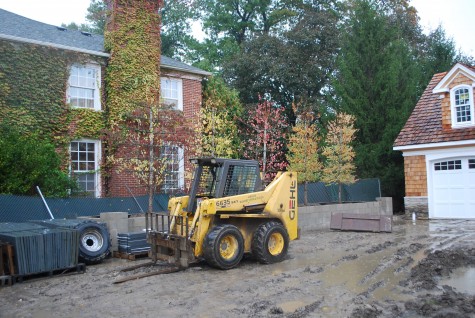Archives for October 2011
At A Glance: Milkweeds Seeding, Fleeing
Near To The Last Of The Lead
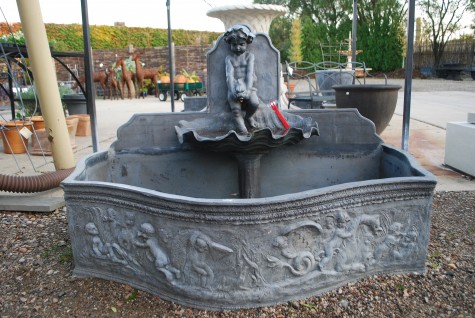 I sold this lead fountain cistern 3 days ago. Stunning-isn’t it? I so clearly remember a constellation of feelings regarding its purchase, some years ago. I was afraid to commit so hefty a chunk of my budget to one ornament. I was equally afraid not to commit to it; I am in the business of making first class garden ornament available to my clients. Some first class ornament involves only a great eye, and not so much money. But lead garden ornament, both new and antique, is very expensive. You may think that committing to a very expensive garden ornament takes nerve. Truth be told, I would not describe myself as nervy. I try to focus on what I cannot live without. Lead in the garden-this I would want.
I sold this lead fountain cistern 3 days ago. Stunning-isn’t it? I so clearly remember a constellation of feelings regarding its purchase, some years ago. I was afraid to commit so hefty a chunk of my budget to one ornament. I was equally afraid not to commit to it; I am in the business of making first class garden ornament available to my clients. Some first class ornament involves only a great eye, and not so much money. But lead garden ornament, both new and antique, is very expensive. You may think that committing to a very expensive garden ornament takes nerve. Truth be told, I would not describe myself as nervy. I try to focus on what I cannot live without. Lead in the garden-this I would want.
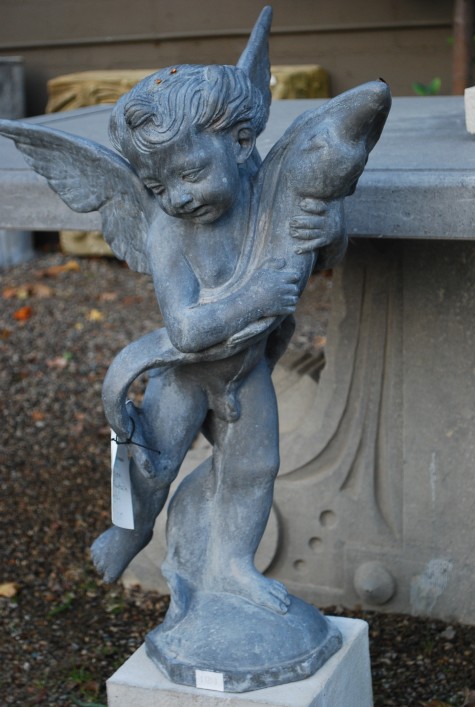 Lead in the garden has long history. English lead ornament has a long long history-this I respect. Lead is poured into molds, and cooled. An artist takes the castings from a raw set of molds, and hammers and sculpts the lead into the finished ornament. A large lead egg cup may take 60 hours of hand work to finish. The finished ornament is very heavy; lead is the densest of all the elements. It is equally as soft. This makes it difficult to transport, and easy to damage. Yet lead is the ideal material for a garden ornament; it is all but impervious to weather and maintenance-free.
Lead in the garden has long history. English lead ornament has a long long history-this I respect. Lead is poured into molds, and cooled. An artist takes the castings from a raw set of molds, and hammers and sculpts the lead into the finished ornament. A large lead egg cup may take 60 hours of hand work to finish. The finished ornament is very heavy; lead is the densest of all the elements. It is equally as soft. This makes it difficult to transport, and easy to damage. Yet lead is the ideal material for a garden ornament; it is all but impervious to weather and maintenance-free.
 The English company known as Bulbeck produces very fine lead garden ornament. Pots, sculptures, fountains and cisterns. Hugo flew over, and paid a visit to us some years ago-he was so pleased that an American garden store was featuring his work. I have four of his lead egg cups available now. They are based on pots from the National Trust garden Anglesey Abbey, and feature four medallions-pears, oak, roses and grapes. I doubt I will be able to buy more, once these four egg cups are sold. The cost of lead has increased so dramatically in the past few years, as has the cost of transport.
The English company known as Bulbeck produces very fine lead garden ornament. Pots, sculptures, fountains and cisterns. Hugo flew over, and paid a visit to us some years ago-he was so pleased that an American garden store was featuring his work. I have four of his lead egg cups available now. They are based on pots from the National Trust garden Anglesey Abbey, and feature four medallions-pears, oak, roses and grapes. I doubt I will be able to buy more, once these four egg cups are sold. The cost of lead has increased so dramatically in the past few years, as has the cost of transport.
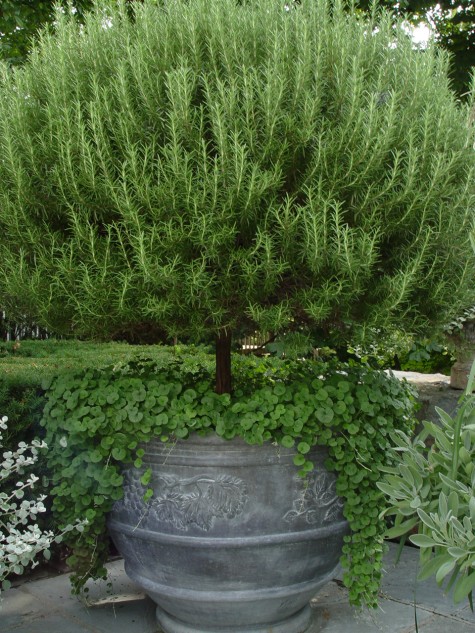 Eighteenth century lead ornament has inspired many of the pieces produced at the Bulkbeck foundry-and no wonder. The production of lead garden ornament and architectural pieces was a flourishing business during that period. Only a few companies deal in lead now; I hope their business stays strong. It has been my pleasure to design and plant around lead ornament; to follow are a few pictures.
Eighteenth century lead ornament has inspired many of the pieces produced at the Bulkbeck foundry-and no wonder. The production of lead garden ornament and architectural pieces was a flourishing business during that period. Only a few companies deal in lead now; I hope their business stays strong. It has been my pleasure to design and plant around lead ornament; to follow are a few pictures.
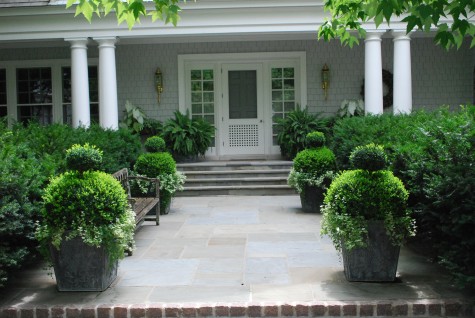 lead tapers with grape garlands
lead tapers with grape garlands
 English lead box with lion medallions
English lead box with lion medallions
 English lead square with rose medallions
English lead square with rose medallions
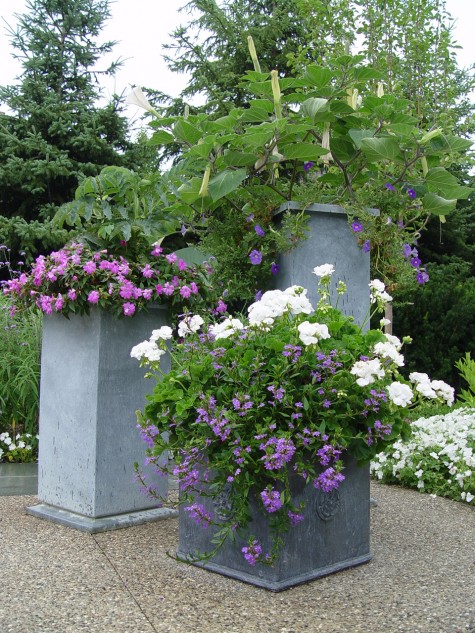 English lead square with contemporary zinc planters
English lead square with contemporary zinc planters
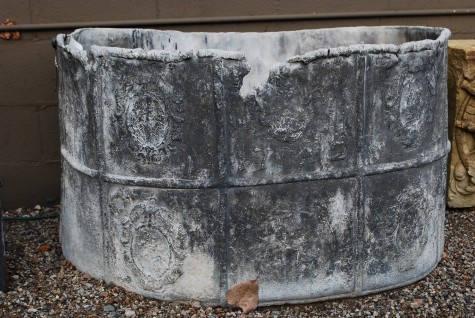 This 17th century English lead cistern is near to the last of my lead. I am looking here at the very best reason I have to find more lead ornament-there is nothing else quite like it.
This 17th century English lead cistern is near to the last of my lead. I am looking here at the very best reason I have to find more lead ornament-there is nothing else quite like it.
Drenched
There is no other word for it-my world is drenched. We have had steady rain 4 days out of every seven the last few weeks. We may have as much as 2 inches of rain before this day is over. No doubt this is wreaking havoc with the fall landscaping season. Too wet to plough describes the situation perfectly. Soil that is sopping wet is too wet to work-unless your idea is to make clay pots. Clay mixed with water, and wedged until there is not one molecule of air left inside-perfect for making pots, but terrible for planting. The property has been driven over by all manner of trucks and equipment necessary to the building phase.
The compaction of soil by machines makes for a most inhospitable home for plants. The roots of plants need oxygen. Just walking on drenched soil is enough to squeeze all of the air out of it. In the spring, I am really careful not to walk the garden until the winter snow and ice has drained out of the soil. Any plant placed in heavy wet soil that has been compacted by footsteps or machinery will have a tougher time getting established.
That said, I have a project that needs a lot from me before the season closes for the winter. As with many projects in a garden, the waiting can take just as much time as the work. This project may be on hold for 3 or 4 days. Judging from the look of the rain soaked land, friable soil is a good many days away.
I need to finish grade this property before I can even think about planting. Sculpting soil, whether with a bulldozer or a grading rake is the foundation upon which the landscape will be built. It is very tough to sculpt soup. Our first move with this new landscape-planting 12 six inch caliper Bowhall maples. We bulldozed 2o yards of mud out of the area, to get down to dryer and more stable soil. Setting big trees at the proper grade is critical to their survival.
It does not matter if it is a big or a small landscape project, any installation needs to be staged. This comes first, this comes next, this comes in the middle-and that comes last. These giant trees needed lots of working space, and a big machine to get them planted. There is one more tree to go in the ground. Once it is planted, we will be able to work our way out from this end of the yard to the street.
I need for Scott from Albaugh Masonry to cover all of the porches and terraces with bluestone-he will need to move stone via loader to wherever he needs it. He did get a large planter box blocked up; we have already planted it with five katsura espaliers. The box will be finished in the same stone as the exterior of the house. He has also blocked in some short walls with pillars that will be capped in limestone. This will give the drivecourt a sense of enclosure. I am used to this-a new house landscape means that my work comes last-in whatever days are leftover. The finishing touches on this part of the landscape I do not expect to accomplish until spring.
I do hope for a much drier and companionable November. I may get that-I may not. We have had years when the ground froze solid in mid November-this makes me wince, just to write about it. So many things in the landscape revolve around a situation over which I have no control.
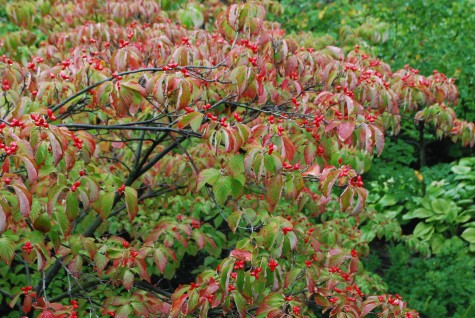 Steady fall rains are not all bad. My dogwoods set their flower buds in the fall-regular rain encourages a heavy spring yield. All three of my kousas are loaded with buds now.
Steady fall rains are not all bad. My dogwoods set their flower buds in the fall-regular rain encourages a heavy spring yield. All three of my kousas are loaded with buds now.
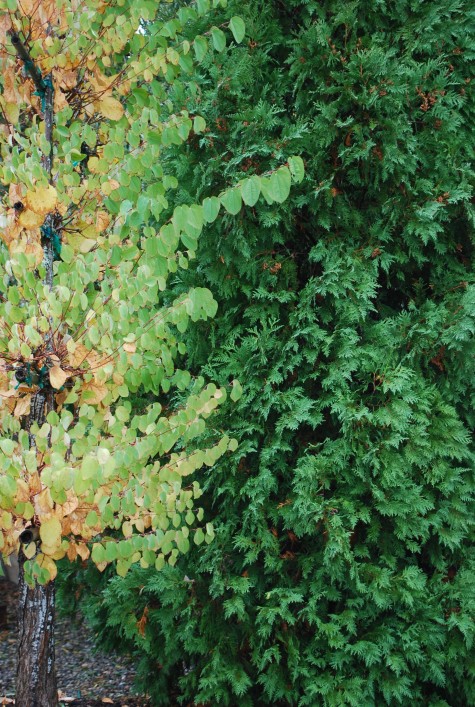 Evergreens photosynthesize all winter long, on what energy they have on reserve from the fall. Before the ground freezes, any evergreen greatly benefits from regular rain-even if that rain comes from the end of your hose.
Evergreens photosynthesize all winter long, on what energy they have on reserve from the fall. Before the ground freezes, any evergreen greatly benefits from regular rain-even if that rain comes from the end of your hose.  Rain-whether there is lots, or a little, or enough, or none-the garden revolves around it. I am happy to report that all of my tulips are in the ground, and getting a thorough soaking. Were I to step on this gound now, I am sure I would be over my ankles in mud. I am hoping for drier weather, soon.
Rain-whether there is lots, or a little, or enough, or none-the garden revolves around it. I am happy to report that all of my tulips are in the ground, and getting a thorough soaking. Were I to step on this gound now, I am sure I would be over my ankles in mud. I am hoping for drier weather, soon.
The Process
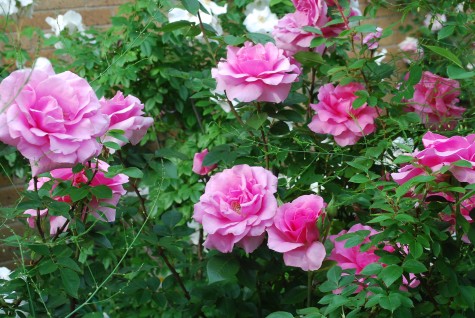
A thriving shrub rose loaded with flowers is one of the best parts of my June garden. This June I had roses better than any other year I can remember; they were glorious. The shapes of the fragrant blooms are beautiful. The foliage was lustrous and healthy. But the real story of a rose is told over a period of months.
 In the spring, warmer temperatures and longer days encourage my roses to send out new shoots. These new shoots grow, and form leaves. At a certain point, a point probably determined by day length, the leaves synthesize a certain protein. Once that protein reaches the tip of a growing shoot, it triggers the genes that govern and initiate blooming. This is a comic book version of the science, but have you not always loved the look of a rose budding, and wondered why it chose that particular day? The green casement around the bud is known as the calyx. It protects the bud from damage and insects prior to the bloom.
In the spring, warmer temperatures and longer days encourage my roses to send out new shoots. These new shoots grow, and form leaves. At a certain point, a point probably determined by day length, the leaves synthesize a certain protein. Once that protein reaches the tip of a growing shoot, it triggers the genes that govern and initiate blooming. This is a comic book version of the science, but have you not always loved the look of a rose budding, and wondered why it chose that particular day? The green casement around the bud is known as the calyx. It protects the bud from damage and insects prior to the bloom.
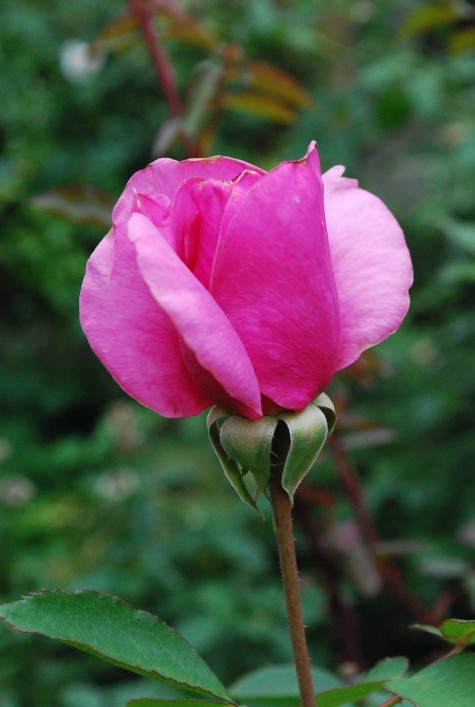 Once the rose bud is ready to open, the five modified leaves that form the calyx open, and lay flat. Once the bloom begins to open, the calyx folds back over what will become the seed pod. The tips of those special leaves hug the stem. This is a beautiful stage.
Once the rose bud is ready to open, the five modified leaves that form the calyx open, and lay flat. Once the bloom begins to open, the calyx folds back over what will become the seed pod. The tips of those special leaves hug the stem. This is a beautiful stage.
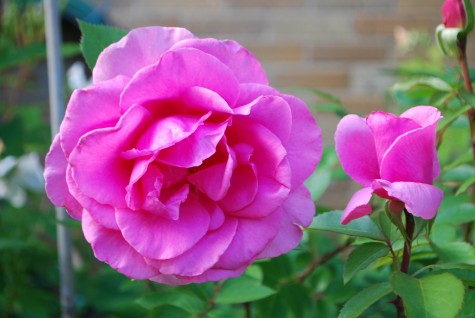 I love garden roses that open wide over a period of days. This Griffith Buck rose, Earthsong, is stunning when it is loaded with full blown blooms. This rose has my attention, and the attention of any pollinators who happen to be in the area.
I love garden roses that open wide over a period of days. This Griffith Buck rose, Earthsong, is stunning when it is loaded with full blown blooms. This rose has my attention, and the attention of any pollinators who happen to be in the area.
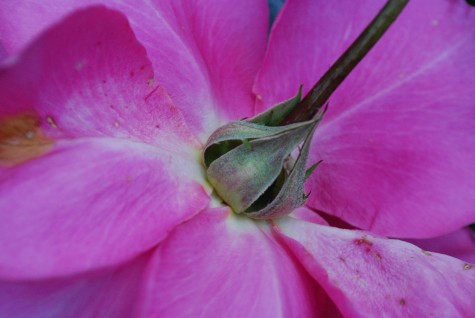 The calyx that once shielded the bud from injury has a new job-protecting the seed that is yet to come. These leaf forms once so green turn frosty, and mature in this position. They have a job to do, which just happens to be very beautiful. The flip side of a rose can be just as beautiful as the front.
The calyx that once shielded the bud from injury has a new job-protecting the seed that is yet to come. These leaf forms once so green turn frosty, and mature in this position. They have a job to do, which just happens to be very beautiful. The flip side of a rose can be just as beautiful as the front.
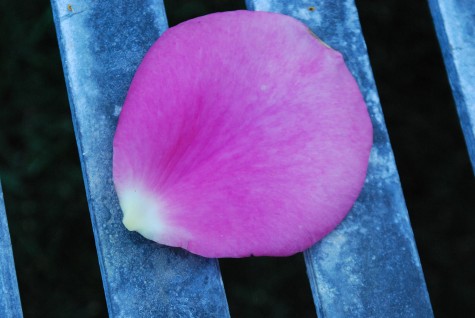 Petals are a modified leaf. The petals of a rose surround the reproductive part of a flower. They are brightly colored for one reason; the function of the petals is to attract pollinators. Gardeners are the lucky visual recipients of that mechanism that produces seed.
Petals are a modified leaf. The petals of a rose surround the reproductive part of a flower. They are brightly colored for one reason; the function of the petals is to attract pollinators. Gardeners are the lucky visual recipients of that mechanism that produces seed.
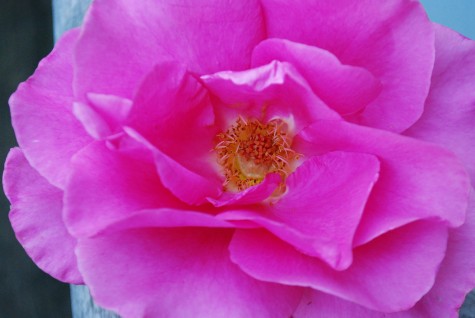 If you were a pollinating insect, this flower would attract your attention, and your visitation. This Earthsong rose has opened wide and flat enough to signal that pollination season is open. Some plants can self pollinate-some need to be cross pollinated to trigger the production of seeds. Knowing how plants have evolved to insure reproduction is part of the marvel that is nature. This process goes on all summer long with the roses.
If you were a pollinating insect, this flower would attract your attention, and your visitation. This Earthsong rose has opened wide and flat enough to signal that pollination season is open. Some plants can self pollinate-some need to be cross pollinated to trigger the production of seeds. Knowing how plants have evolved to insure reproduction is part of the marvel that is nature. This process goes on all summer long with the roses.
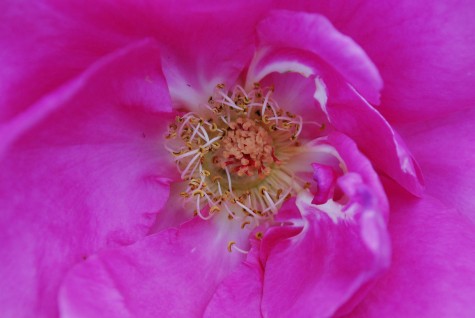 OK, we are at that stage ripe for reproduction. The male stamens, that outer ring of pollen held aloft on fragile stems, surrounds the female pistil; fertilization, and the eventual production of seeds will insure the continuation of the species. Sexy this, but also entirely practical. The mechanism by which species survive has created no end of astonishing stories.
OK, we are at that stage ripe for reproduction. The male stamens, that outer ring of pollen held aloft on fragile stems, surrounds the female pistil; fertilization, and the eventual production of seeds will insure the continuation of the species. Sexy this, but also entirely practical. The mechanism by which species survive has created no end of astonishing stories.
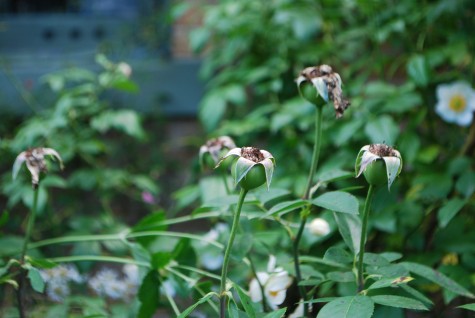 Once pollination has occurred, a seed pod begins to develop. I do not prune my roses much after the middle of August. I want the growth to harden off. My roses go to sleep ever so gradually. How they slow down over a period of months helps them to endure the winter. The green calyx bulges out at this stage-it has done its job. A seed pod is in the process of maturation.
Once pollination has occurred, a seed pod begins to develop. I do not prune my roses much after the middle of August. I want the growth to harden off. My roses go to sleep ever so gradually. How they slow down over a period of months helps them to endure the winter. The green calyx bulges out at this stage-it has done its job. A seed pod is in the process of maturation.
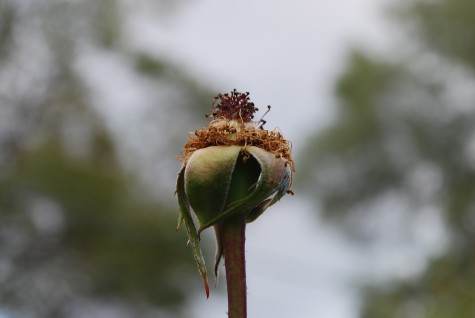 This moment in the cycle of a rose is every bit as beautiful as its first spring gesture. I follow the entire life cycle of a rose not as a scientist, but as a gardener enchanted by the the process of life. Anyone who asks me how long my roses bloom-I tell them months.
This moment in the cycle of a rose is every bit as beautiful as its first spring gesture. I follow the entire life cycle of a rose not as a scientist, but as a gardener enchanted by the the process of life. Anyone who asks me how long my roses bloom-I tell them months.
 The mature rose hips are bright orange. From the first buds in late May to this October stage took five months. Those June blooms are but one part of the seasonal business of the rose.
The mature rose hips are bright orange. From the first buds in late May to this October stage took five months. Those June blooms are but one part of the seasonal business of the rose.

